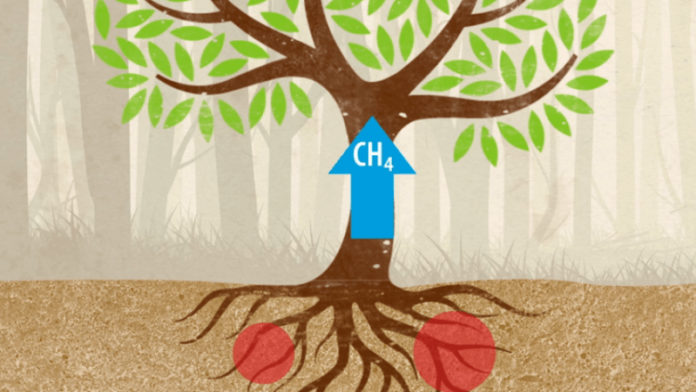Edited excerpts from the article published in C&EN (Chemical & Engineering News):
Vincent Gauci has spent more than a decade measuring methane emissions from wetlands. During that time, a growing body of research has emerged detailing how trees in these ecosystems emit methane from their trunks because of living in anaerobic soils. To quantify the rates of methane emissions by trees in other ecosystems, Gauci’s research group made a surprising discovery.
Now Gauci, a biogeochemist at the University of Birmingham, has published that research, describing how upland trees actually remove methane from the atmosphere, in stark contrast to what scientists previously thought (Nature 2024, DOI: 10.1038/s41586-024-07592-w).
It got really interesting because most trees Gauci’s team studied were emitting methane close to the base of the trunk. When the team measured along the length of the trunk, they noticed that with increasing height, methane emissions would gradually decrease and eventually show evidence of methane uptake. They found that microbes living in the tree bark called methanotrophs were absorbing methane and converting the gas into carbon dioxide to provide themselves with energy.
The study was also the first to quantify how much tree bark surface area there is on Earth, which was necessary to estimate methane uptake on a global scale. Gauci says the results suggest there’s enough tree bark to cover the equivalent surface area of the Earth.
Gauci and his collaborators combined the tree bark area estimates with their data on methane exchange and estimated that trees are a net methane sink, removing between 24.6 and 49.9 million metric tons of methane from the atmosphere per year. That’s far less than the estimated 7.5 billion metric tons of CO2 that trees remove each year. But considering that relative to carbon dioxide, methane is 80 times more potent as a greenhouse gas over a period of 20 years, the authors of the research conclude that the added benefit of methane absorption by trees makes them 10% better at mitigating climate change than previously thought.
Luke Jeffrey, a biogeochemist at Southern Cross University, has called this “a pioneer research study” and says that while a few studies have reported methane uptake by trees, until now “there was no systematic study published quantifying this.”
Jeffrey also says more work needs to be done to validate the estimates of methane removal. That’s something Gauci acknowledges and has already begun work on. “Our measurements are only in tree trunks. We need to get up into the canopy,” he says. “We could actually be underestimating [the level of methane removal].”









